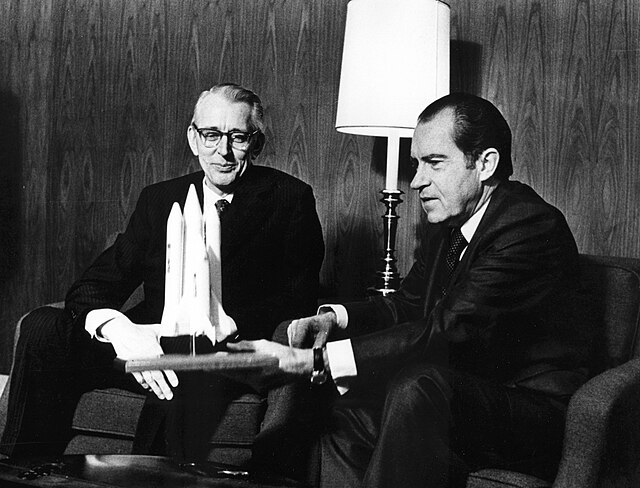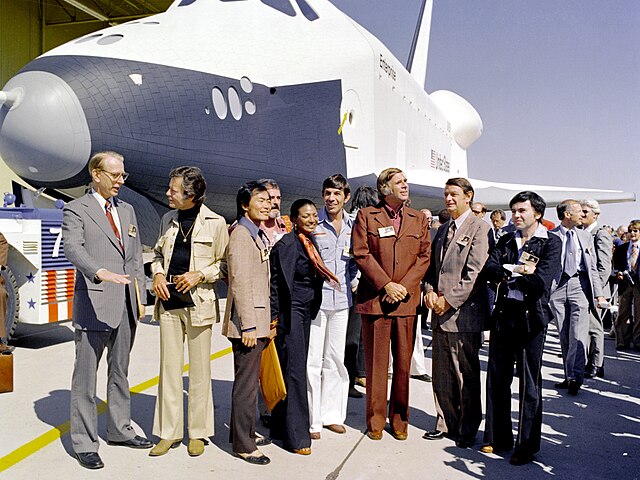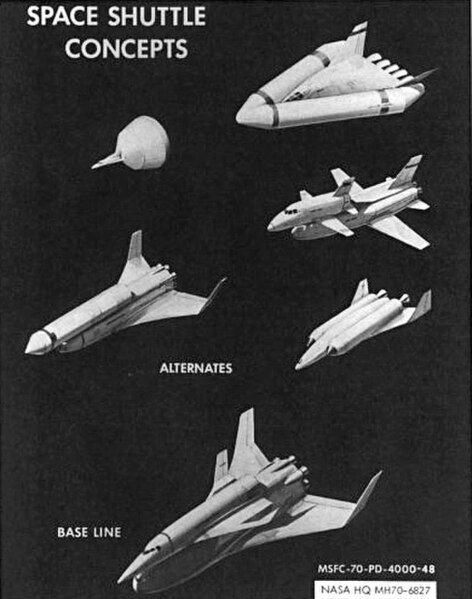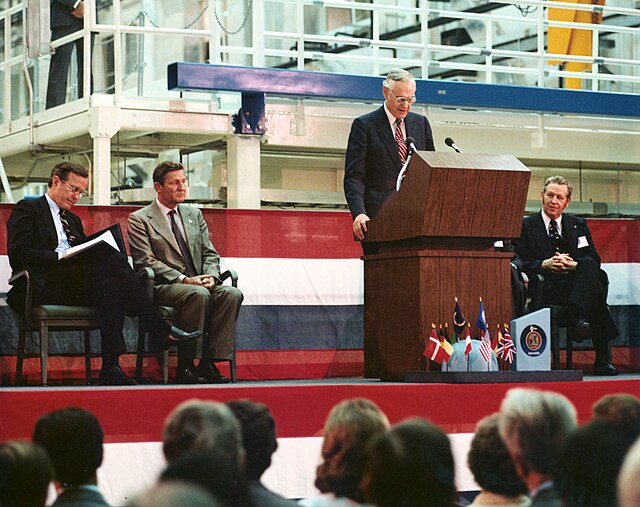James Chipman Fletcher served as the 4th and 7th Administrator of NASA, first from April 27, 1971, to May 1, 1977, under President Richard M. Nixon, and again from May 12, 1986, to April 8, 1989, under President Ronald Reagan. As such, he was responsible for Apollo Moon missions 15, 16, and 17, the early planning of the Space Shuttle program, and later for the shuttle program's recovery and return to flight after the Space Shuttle Challenger accident. Prior to this, he was president of the University of Utah from 1964 to 1971.
James C. Fletcher
President Nixon (right) with NASA Administrator James C. Fletcher in January 1972
Dr. James Fletcher (left) with the cast of Star Trek in front of the Space Shuttle Enterprise at the Palmdale manufacturing facility
The Space Shuttle program was the fourth human spaceflight program carried out by the U.S. National Aeronautics and Space Administration (NASA), which accomplished routine transportation for Earth-to-orbit crew and cargo from 1981 to 2011. Its official name, Space Transportation System (STS), was taken from a 1969 plan for a system of reusable spacecraft of which it was the only item funded for development. It flew 135 missions and carried 355 astronauts from 16 countries, many on multiple trips.
Early U.S. space shuttle concepts
President Richard Nixon (right) with NASA Administrator James Fletcher in January 1972, three months before Congress approved funding for the Shuttle program
Shuttle approach and landing test crews, 1976
NASA Administrator address the crowd at the Spacelab arrival ceremony in February 1982. On the podium with him is then-Vice President George Bush, the director general of European Space Agency (ESA), Eric Quistgaard, and director of Kennedy Space Center Richard G. Smith






